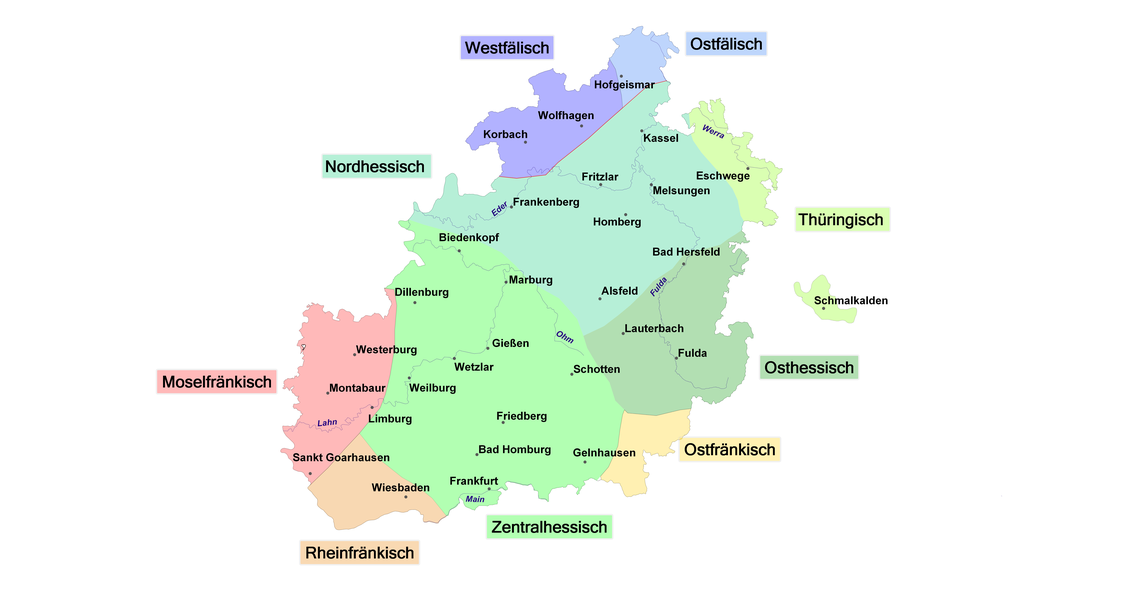Main Content
The Hesse-Nassau Dialect Dictionary – background

Survey area
The Hesse-Nassau Dialect Dictionary covers the dialect vocabulary of the former Prussian province of Hesse-Nassau, the Hesse-Darmstadt province of Upper Hesse, the Principality (later Free State) of Waldeck, the Rhenish district of Wetzlar, and the Westphalian district of Wittgenstein. From a linguistic geographic perspective, the dialect regions of Lower, Central, and Eastern Hessian as well as peripheral areas of Westphalian, Eastphalian, Thuringian, East Franconian, Rhenish Franconian, and Moselle Franconian are covered. The dialect vocabulary of these areas was recorded as it was in use during the survey period from 1912 to 1934. Thus, the area of today’s federal state of Hesse north of the Main River is covered in full, as are the smaller areas of Rhineland-Palatinate (Western Nassau), North Rhine-Westphalia (Wittgenstein), and Thuringia (Schmalkalden).
History of the office
Head of the office
1911–1934 Ferdinand Wrede
1934–1971 Luise Berthold
1971–1994 Hans Friebertshäuser
1994–2016 Heinrich J. Dingeldein
2016-2021 Alexander Werth (provisional)
2021-2023 Bernd Vielsmeier
Since 2024 Nathalie Mederake
Method
With cross-references from dialect-related headwords, the dictionary is organised strictly alphabetically using standard or "standardised" lemmas, covering the dialect vocabulary in its entirety – that is, not just the words that are specific to the dialect but also the words that are shared by the standard language and the dialect.
The presented material can be considered vouched for the first third of the 20th century, starting around the turn of the century. Documentary and older material is used only if it can help clarify factual or grammatical issues; evidence obtained later is only considered if it can also be proven for the period of validity.
The publication is derived from handwritten collections organised in alphabetically arranged card indexes (approximately 350,000 slips). These originate from voluntary surveys of recruited employees (mainly teachers), covering a total of 69 questionnaire surveys (some connected only to subareas) and from written (both printed and unprinted) sources, including dialect literature and scholarly articles. A significant and methodologically important portion is sourced from direct surveys.